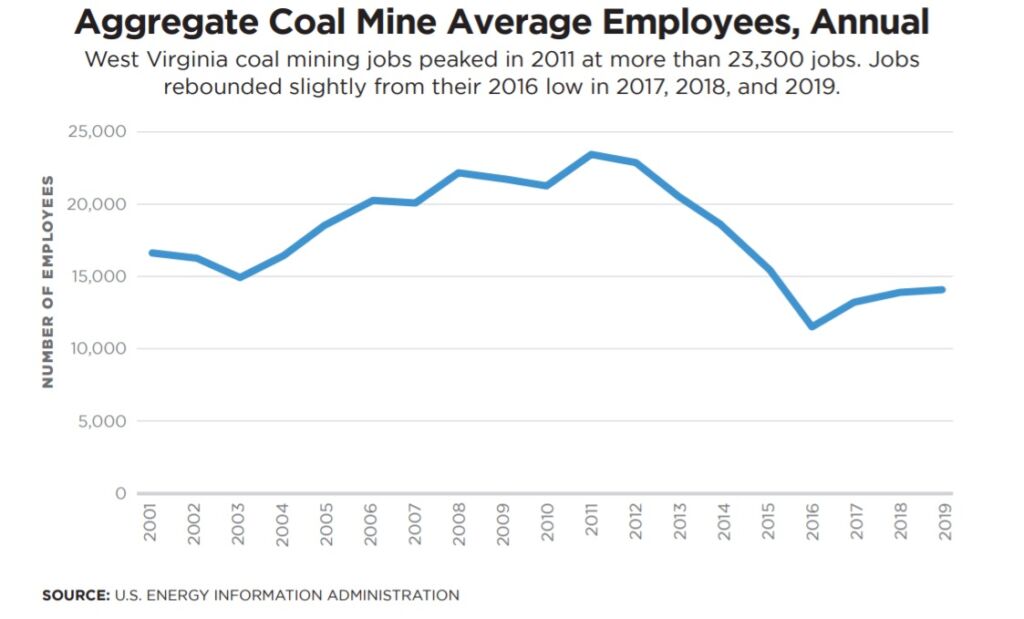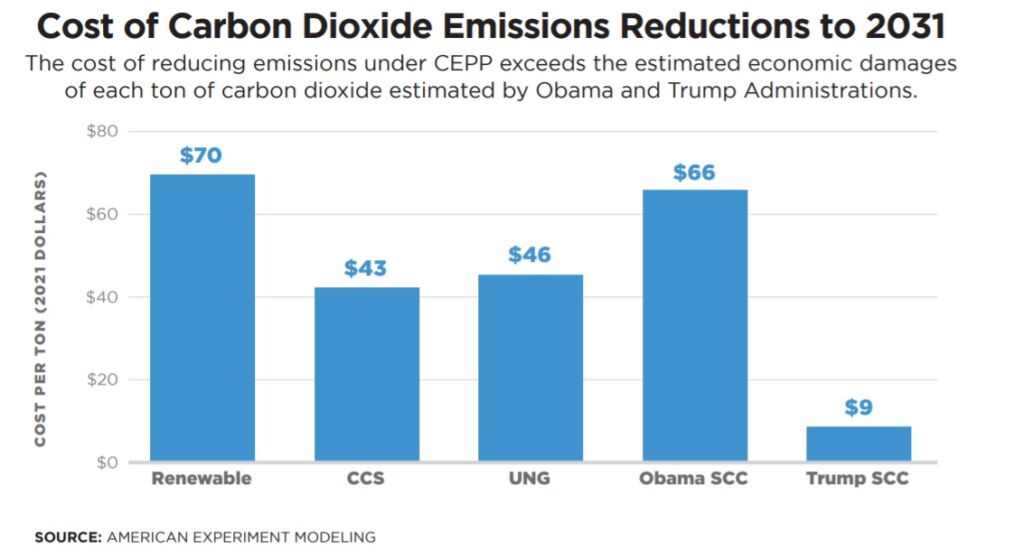American Experiment study finds Clean Electricity Performance Program would cost WV $34.9 billion
Center of the American Experiment has released a new report with the Cardinal Institute For West Virginia Policy detailing the cost of the Clean Electricity Performance Program (CEPP) in West Virginia.
Media reports indicate that the CEPP may no longer be part of the reconciliation package due to the objections of West Virginia Senator Joe Manchin, but this does not change the fact that this policy, or similar policies, would be devastating for West Virginia’s economy.
The CEPP would have significantly increased the cost of electricity for West Virginia families and businesses, even if it had been amended to allow carbon capture and sequestration (CCS) equipment on coal plants or allowed unabated natural gas (UNG) to substitute for coal in an attempt to win Manchin’s approval.
American Experiment calculated the cost of complying with the CEPP under three different scenarios; a Renewable scenario, where wind and solar are used to meet carbon-free requirements, a CCS scenario, where existing coal-plants in West Virginia are retrofitted with CCS technology, and a UNG scenario, where natural gas is allowed to substitute for coal-fired generation.
Costs
Achieving CEPP targets in West Virginia under the Renewable, CCS, and UNG scenarios would cost an additional $34.9 billion, $24 billion and $6.1 billion, respectively (in constant 2021 dollars) compared to operating the current electric grid. Rising costs would cause electricity prices to increase by 25 percent in 2031 in the Renewable scenario, 22.5 percent for the CCS scenario, and 8 percent for the UNG scenario, compared to 2019 rates.
If borne by residential, commercial and industrial electricity customers in West Virginia, rather than federal taxpayers, the additional costs imposed by the CEPP would be more than $1,100 per customer, $760 per customer and $190 per customer per year through 2052 for the Renewable, CCS and UNG scenarios, respectively.
Economic impact
Higher electricity prices would lead to higher costs for all West Virginians, but low-income households would be disproportionately hurt because these families spend a higher percentage of their income on energy bills relative to other West Virginia households.
This is simply unacceptable because West Virginians living in several counties already pay more than 6 percent of their income to pay their energy bills.

West Virginia would also be harmed by meeting CEPP objectives under the Renewable scenario because it is a large exporter of coal-fired electricity supplied by West Virginia coal mines.
Coal production and employment in West Virginia have declined dramatically since 2011, when the state produced 134 million short tons and employed 23,307 miners, according to EIA data. Production has declined due to competition with low-cost natural gas and Obama-era regulations designed to reduce coal consumption.

Despite declining production, coal mining is still a vital part of the West Virginia economy, constituting 6.5 percent of the state’s gross domestic product in 2019 and employing nearly 14,000 people.
As a result, a forced transition to wind and solar electricity under the CEPP would be a one-two punch to West Virginia’s economy by increasing the cost of electricity and destroying thousands of high-paying coal mining jobs in the state.
Emissions
Emissions would fall the most in the Renewable scenario, followed by the CCS scenario and the UNG scenario. While emissions decrease the most in the Renewable scenario, these emissions reductions cost more than the reductions achieved in the other scenarios.
In fact, the cost of reducing emissions in the Renewable scenario is so high that it exceeds the “cost” of the carbon dioxide emissions, themselves, using the Obama administration’s cost estimates. This means it is better to do nothing than to implement the Renewable scenario.

Senator Manchin’s constituents are fortunate that the CEPP appears to have ended up on the cutting room floor because the CEPP would have continued to destroy the West Virginia way of life and imposed far more harm to West Virginia families and the state’s economy than the carbon-dioxide emissions it aimed to reduce.